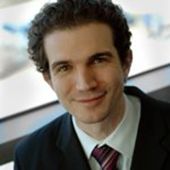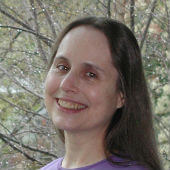Problems Local Ambassadors Are Working to Resolve
The Local Ambassadors Initiative addresses various impediments that currently hamper the growth of collaboration among the practitioners, researchers, students, and organizations specializing in the various disciplines of UX. There are two classes of common problems that local ambassadors are working to resolve: lack of connection among people with compatible interests and impediments to the success of existing efforts.
There is a lack of connection among people in different user experience specialties. Collaboration suffers because people aren’t able to make the connections that would provide them channels for communication. Local ambassadors help to establish such connections and open up those channels. There are several common patterns of disconnection where local ambassadors can make a difference:
- Practitioners and researchers aren’t collaborating. Local ambassadors bring practitioners and researchers together, enabling practitioners to make decisions with the backing of research, while helping to bring research into practice.
- Practitioners and students aren’t collaborating. Local ambassadors encourage outreach from professionals to schools, helping schools to better prepare students for the roles they will fill. Practitioners benefit, too, because students enter the workforce better prepared to assist in the resolution of real-world problems.
- Experienced practitioners aren’t communicating with new entrants into UX professions, who often find it difficult to find their niche. Organizations may draw newcomers in incompatible directions or pigeonhole them in groups that don’t match their ambitions. Local ambassadors can connect new practitioners with established colleagues who have backgrounds that match their interests, affording newcomers better opportunities for obtaining the information and guidance they need.
- Businesses aren’t collaborating with each other. Because of competition between their companies, professionals may feel disinclined to collaborate with each other and share best practices. Local ambassadors seek to open professionals to the potential for personal growth, career development, and business expansion that their participation in a diverse UX-centered community can offer.
- UX professionals aren’t communicating with business leaders. Far too often, businesses fail to give priority to their products’ user experiences and don’t give UX professionals responsibility for and ownership of product design. Local ambassadors establish connections between business leaders and UX professionals to encourage understanding of the value of user experience.
- UX professionals aren’t communicating with the general public. Users still blame themselves for poor user experiences instead of recognizing that usability is a result of good design. Local ambassadors work to spread awareness of the value of user experience among the general public and encourage users to hold us accountable for their experience of the products we design.
Logistical or organizational problems can also hinder good efforts at collaboration, limiting the extent to which collaboration can succeed. Local ambassadors seek ways to make collaborations more effective by removing impediments:
- User experience organizations fragment local populations, forming islands of collaboration. People are collaborating effectively within each island, but not across organizations. Local ambassadors work to ensure that communication is equally free-flowing among all members of a local UX community.
- Conflicting meeting schedules of local organizations sometimes force people to choose between concurrent events. Local ambassadors seek to maximize participation in all organizations’ events by establishing connections between leaders of those organizations and helping them to resolve logistical conflicts.
- Membership dues impede collaboration. Local ambassadors can provide alternative forums for people who don’t attend the meetings of established local organizations, while working with organizational leaders to build their memberships.
- People from the same locale may attend different conferences, missing opportunities to connect with one another, while failing to share what they learn with one another. Local ambassadors connect conference attendees with others from their locales, encouraging dialogue among them. They also facilitate the dissemination of conference attendees’ acquired learning among others who have limited opportunities for travel.
UXnet Local Ambassador Success Stories
Our network of local ambassadors is growing rapidly. UXnet has local ambassadors on every continent except Antarctica. There are currently 68 local ambassadors in 21 countries and 55 locales worldwide, as Table 1 shows.
| Australia |
Murrumbateman, New South Wales |
Donna Maurer |
| Austria |
Vienna |
Michael Zobel
Konrad Baumann |
| Canada |
Calgary , Alberta |
Scott Weisbrod |
| |
Montreal , Quebec |
Barry
Welford |
| |
St. John’s , Newfoundland |
John Sheridan |
| |
Toronto , Ontario |
Matthew Milan |
| |
Vancouver , British Columbia |
Dmitry Nekrasovski |
| Chile |
Santiago |
Javier Velasco |
| England |
London |
Joshua Kaufman |
| |
Manchester |
David Hawdale |
| France |
Paris |
Frederic Gaillard |
| Germany |
Wedel |
Karen Lindemann |
| India |
Bangalore, Karnataka |
Amit Deshpande |
| |
Gurgaon, New Delhi |
Ashish Chopra |
| Italy |
Milan |
Matteo Penzo
|
| Japan |
Tokyo |
Nobuya Sato |
| Netherlands |
Zoetermeer |
Oskar van Rijswijk |
| New Zealand |
Auckland |
Suzanne Currie
Justine Sanderson
|
| |
Wellington |
Michael Andrews
|
| Nigeria |
Lagos |
Sam (Tolu) Koyejo |
| Norway |
Oslo |
Are Halland
Jostein Magnussen |
| Philippines |
Manila |
Jesse Hernandez Liwang |
| Poland |
Warsaw |
Marcin Bober |
| Singapore |
Singapore |
Maish Nichani |
| South Africa |
Johannesburg |
Jason Hobbs |
| Spain |
Barcelona |
Ariel Guersenzvaig |
| |
Bilbao |
Alberto Lacalle |
| Switzerland |
Geneva |
Florian Egger |
| |
Neuchatel |
Sam Rossetti
Noemie Oulevay |
| United States |
Albuquerque, New Mexico |
Christopher Rivard |
| |
Ann Arbor, Michigan |
Louis Rosenfeld |
| |
Atlanta, Georgia |
Paul Sherman |
| |
Austin, Texas |
Russell Wilson |
| |
Boston, Massachusetts |
Bob Goodman
Christopher Cummings |
| |
Chicago, Illinois |
Joel Grossman |
| |
Dallas/Fort Worth, Texas |
John Martin |
| |
Dayton, Ohio |
Peter Jones |
| |
Denver/Boulder, Colorado |
Laurie Lamar
Karyn Young |
| |
Detroit, Michigan |
Dave Mitropoulos-Rundus |
| |
Kansas City, Missouri |
Dave Nelson |
| |
Los Angeles, California |
Jessyca Frederick
David Hoard |
| |
Milwaukee/Madison, Wisconsin |
Rob Conley |
| |
New York City, New York |
Laura Lee |
| |
Philadelphia, Pennsylvania |
John Ferrara |
| |
Pittsburgh, Pennsylvania |
Mark Bosco |
| |
Portland, Oregon |
Bill DeRouchey |
| |
Research Triangle Park, North Carolina |
Rick Cecil |
| |
Richmond, Virginia |
Joe Sokohl |
| |
St. Louis, Missouri |
Eric Svoboda |
| |
San Diego, California |
Jack Carlson
John Trenouth
Sean Van Tyne |
| |
San Francisco Bay Area, California |
BayDUX
Pabini Gabriel-Petit
Fred
Sampson
Mike Van Riper |
| |
Seattle, Washington |
Nick Finck |
| |
Spokane, Washington |
Andy Walker |
| |
Toledo, Ohio |
Keith Instone |
| |
Washington, District of Columbia |
Bilen Aynu
Olga Howard
Lisa Saavedra |
The locales in which our local ambassadors have been working include
- large cities with active UX communities— These locales are metropolitan areas in which there are already active UX communities such as Silicon Valley. See the sidebar on BayDUX.
- less active, smaller cities—These locales include smaller cities that don’t offer UX professionals many options for collaboration or networking, such as Toledo, Ohio. See the sidebar on what Keith Instone has accomplished in Toledo.
- regions—Some locales are wide-ranging regions that include multiple states, such as the Pacific Northwest in the United States. See the sidebar about how Nick Finck has fostered a growing UX community in the Pacific Northwest and recruited other local ambassadors.
- countries—Some locales are countries such as Italy. See the sidebar about the events Matteo Penzo is organizing in Italy.
There are many other success stories we could tell you about what our local ambassadors are doing in locales around the world.
Milan, Italy
By Matteo Penzo
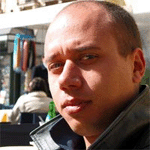 When I first became a UXnet local ambassador, I contacted all the local representatives of the various UX organizations—just to let them know what UXnet is and what we could achieve together. Although we don’t have a lot of organizations here in Italy, those I contacted included the UPA, SIGCHI, International Webmasters Association (IWA), and IAI.
When I first became a UXnet local ambassador, I contacted all the local representatives of the various UX organizations—just to let them know what UXnet is and what we could achieve together. Although we don’t have a lot of organizations here in Italy, those I contacted included the UPA, SIGCHI, International Webmasters Association (IWA), and IAI.
I’ve introduced UXnet and its philosophy of cooperation and collaboration in various public speeches, including those I gave at the international consumer electronics exposition Smau 2004 and at a Macromedia event in Italy, From A to Web. I had an opportunity to talk about UXnet with Jang F.M. Graat, the President of the STC TransAlpine Chapter (TAC), when he was in Italy for a seminar, which also led to a nice talk with Dr. Bill Gribbons of the Design and Usability Center at Bentley College in Boston. I had Bob Goodman, the UXnet local ambassador for Boston, contact Dr. Gribbons to strengthen the link.
All this promotion of UXnet led to my organizing the first big UXnet event in Italy, Le Frontiere dell‘Interazione (The Frontiers of Interaction), which took place on July 11, 2005 in the computer science department at the Milano Bicocca University. This event benefited from the presence of some highly polished presenters such as keynote speaker Dirk Knemeyer, Giorgio De Michelis, Leandro Agrò, Giovanni Bellocchio, Marco Loregian, and—well—myself. For more information about this event, including many of the speakers’ slides, go to the Frontiers of Interaction Web site.
Web site.
The Frontiers of Interaction was the first in a planned series of events related to user experience and declares the strong link we’d like to have with the academic world. Apart from this collaboration with the Milano Bicocca University, we’re starting a series of talks with the psychology department of the University of Padua, which has established the first Italian masters program in human factors.
For 2006, I’m now planning a mid-February event for the leaders of all the UX-related organizations in Italy as well as some user groups—including those for Java and Macromedia/Adobe—and online magazines such as Idearium.org, which hosts our Frontiers of Interaction Web site. I’m also preparing the ground for an even better Frontiers of Interaction event later this spring. Stay tuned.
Looking Toward a Bright Future
For UX professionals and their organizations, specialization is a natural consequence of the growth that the UX movement has experienced worldwide. To overcome our tendency toward fragmentation and increase the potential for collaborative efforts, local ambassadors are building connections across job title, role, professional association, business organization, and academic institution. Local ambassadors encourage discussion among researchers, students, and practitioners and foster collaboration among designers, information architects, usability professionals, engineers, and business management.
UXnet sees the rapid expansion of the UX movement as a great asset, because it fosters more diversified multidisciplinary collaboration. The local ambassadors’ mission is to seize the opportunity this growth affords.
San Francisco Bay Area, California, USA
By Pabini Gabriel-Petit, with assistance from my co-ambassadors and BayDUX co-chairs Fred Sampson and Mike Van Riper
San Francisco Bay Area Local Ambassadors—Pabini, Fred, and Van, pictured in order from top to bottom.
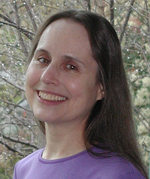 During DUX2003, Mike Van Riper—better known as “Van” and then chair of BayCHI, the San Francisco Bay Area chapter of SIGCHI—and Fred Sampson—who at that time was President of the Silicon Valley Chapter of STC—organized a meeting of representatives from all the UX organizations in the San Francisco Bay Area, including local chapters of ACM, AIGA, IDSA, SIGCHI, SIGGRAPH, STC, and the Web3D Consortium. Van dubbed this coalition of local UX organizations BayDUX. Subsequently, they brought together representatives of these organizations for quarterly meetings, in an endeavor to foster collaboration and cooperation among them.
During DUX2003, Mike Van Riper—better known as “Van” and then chair of BayCHI, the San Francisco Bay Area chapter of SIGCHI—and Fred Sampson—who at that time was President of the Silicon Valley Chapter of STC—organized a meeting of representatives from all the UX organizations in the San Francisco Bay Area, including local chapters of ACM, AIGA, IDSA, SIGCHI, SIGGRAPH, STC, and the Web3D Consortium. Van dubbed this coalition of local UX organizations BayDUX. Subsequently, they brought together representatives of these organizations for quarterly meetings, in an endeavor to foster collaboration and cooperation among them.
When UXnet put out its call for people to serve as UXnet local ambassadors, the three of us volunteered. Because UXnet and BayDUX share a common purpose, BayDUX became its local presence in the San Francisco Bay Area, and we three local ambassadors became its co-chairs.
In addition to its founding members, BayDUX now includes organization liaisons from HFES, IAI, IxDA, on whose Board of Directors I serve, and the UPA. Each participating organization has from one to three liaisons who represent the organization at our quarterly BayDUX Council meetings. We communicate with one another through our Yahoo! Group email address, and BayCHI hosts our Web presence on their site.
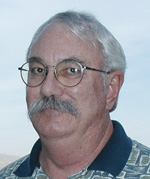 The first big event in which BayDUX participated after joining UXnet was the BayCHI monthly program meeting “User Experience: Why Do So Many Organizations Believe They Own It?,”
The first big event in which BayDUX participated after joining UXnet was the BayCHI monthly program meeting “User Experience: Why Do So Many Organizations Believe They Own It?,” which took place in October of 2004 at Stanford University. BayDUX organized the special networking hour that preceded the meeting, where all of our participating organizations had the opportunity to communicate the advantages of membership to attendees. The meeting began with Terry Winograd welcoming everyone on behalf of the Stanford d.school. Then Richard Anderson interviewed Don Norman—who originally coined the term user experience. Don talked about the need for multidisciplinary product teams who share responsibility for user experience. Finally, Rashmi Sinha presented a brief history of UX organizations and moderated a panel comprising representatives of ten UX organizations, who spoke about their organizations, then answered the audience’s questions about user experience. I spoke about IxDG (now IxDA). Approximately 500 people attended this event.
which took place in October of 2004 at Stanford University. BayDUX organized the special networking hour that preceded the meeting, where all of our participating organizations had the opportunity to communicate the advantages of membership to attendees. The meeting began with Terry Winograd welcoming everyone on behalf of the Stanford d.school. Then Richard Anderson interviewed Don Norman—who originally coined the term user experience. Don talked about the need for multidisciplinary product teams who share responsibility for user experience. Finally, Rashmi Sinha presented a brief history of UX organizations and moderated a panel comprising representatives of ten UX organizations, who spoke about their organizations, then answered the audience’s questions about user experience. I spoke about IxDG (now IxDA). Approximately 500 people attended this event.
In December of 2004, we organized an event that was co-sponsored by AIGA and IxDG and hosted by Yahoo! I had encouraged Dirk Knemeyer, who was then leader of the local ambassadors and is still on the UXnet Executive Council, to develop a presentation on “The Future of Digital Product Design.” Following Dirk’s excellent talk, a panel including Sarah Allen, Neil Day, James Leftwich, Luke Wroblewski, and myself discussed digital product design. The presentation is available on Peter J. Bogaards’ InfoDesign site.
Following Dirk’s excellent talk, a panel including Sarah Allen, Neil Day, James Leftwich, Luke Wroblewski, and myself discussed digital product design. The presentation is available on Peter J. Bogaards’ InfoDesign site. Dirk has since given this presentation at several other events, including a DevGroup NW meeting in Portland and The Frontiers of Interaction in Italy.
Dirk has since given this presentation at several other events, including a DevGroup NW meeting in Portland and The Frontiers of Interaction in Italy.
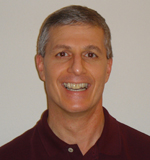 In the spirit of cross-organization collaboration, Van and I facilitated IxDA and BayCHI’s joining forces to sponsor quarterly IxDA / BayCHI Interaction Design Birds of a Feather meetings, which Yahoo! now hosts. Speakers have included Kim Goodwin, who spoke about “Getting Your Design Built,”
In the spirit of cross-organization collaboration, Van and I facilitated IxDA and BayCHI’s joining forces to sponsor quarterly IxDA / BayCHI Interaction Design Birds of a Feather meetings, which Yahoo! now hosts. Speakers have included Kim Goodwin, who spoke about “Getting Your Design Built,” and Luke Wroblewski, who gave a presentation on “Visual Communication Principles for Web Application Interface Design.”
and Luke Wroblewski, who gave a presentation on “Visual Communication Principles for Web Application Interface Design.”
In November 2005, BayDUX and its participating organizations sponsored the opening reception at DUX2005, which was the closing event of World Usability Day. During DUX, Van also organized a dinner where members of the BayDUX Council met UXnet local ambassadors who were attending DUX. For more details, read “DUX2005: One Person’s Journey” and “Another Perspective on DUX2005.”
Van and I have also worked to establish resources that all local ambassadors can use. Van set up a LinkedIn account for UXnet. I contributed to the design of the Web pages for UXnet locales and created a test page with BayDUX data, using the newly implemented template. We’re currently trying to recruit university liaisons to BayDUX.
Seattle and the Pacific Northwest, USA
By Nick Finck
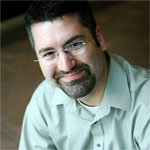 The UXnet initiative has really taken off in the Pacific Northwest over the last year. Originally, I covered both Seattle and Portland. We went from one local ambassador covering the whole region in the Spring of 2005 to having Bill DeRouchey take over the Portland area, Andy Walker in Spokane, and myself remaining the local ambassador in Seattle. We hope to have another local ambassador in the Redmond/Bellevue area soon as well.
The UXnet initiative has really taken off in the Pacific Northwest over the last year. Originally, I covered both Seattle and Portland. We went from one local ambassador covering the whole region in the Spring of 2005 to having Bill DeRouchey take over the Portland area, Andy Walker in Spokane, and myself remaining the local ambassador in Seattle. We hope to have another local ambassador in the Redmond/Bellevue area soon as well.
In 2005, the first UXnet Local Leadership Summits took place in Seattle on March 29th and in Portland on April 2nd, just before CHI 2005. I had prepared a PowerPoint presentation about our UXnet mission, what organizations need and don’t need, the benefits of local organizations cooperating with one another, and the services UXnet will provide. Other local ambassadors have since used this presentation as a model when preparing for similar meetings in their locales. Pabini Gabriel-Petit, San Francisco Bay Area local ambassador, attended the Portland Summit and helped answer the many questions representatives of local organizations asked about UXnet.
At the CHI 2005 Development Consortium, Dirk Knemeyer, Matteo Penzo, and I gave a presentation called “Local Ambassadors: Local Action/Global Impact,” which described the UXnet Local Ambassadors Initiative and its vision for international collaboration among UX professionals from various disciplines, uniting in a shared effort to develop a productive UX community.
We have had a lot of support from various local chapters and organizations. Participating organizations in Seattle now include AIGA, AMA, Graphic Artists Guild (GAG/SPGA), Idea Day, Seattle Bloggers, Seattle Mobile, SIGCHI, and STC. Those in Portland include University of Portland ACM, AIGA, AMA, DevGroup NW (Macromedia MUG), Goto+Play Network, Internet Professionals Network (IPN), STC, and CHIFOO, the Oregon chapter of SIGCHI.
Other activities and events of the last year include five social events, three workshops, and assisting in the promotion of three conferences—the STC Conference in Seattle, AIGA Currents 9 in Seattle, and WebVisions 2005 in Portland. By far the most exciting thing that’s happening is our creation of Web sites and calendars for local UX related events. While these sites and calendars haven’t launched yet, we are pretty confident that they will become an invaluable resource for the whole UX community in the Pacific Northwest.
Over the next few months, we hope to organize regular monthly social gatherings that will be free to everyone in the UX community. We also hope to secure support from a few of the more elusive local organizations and local chapters of national organizations.
Toledo, Ohio, USA
By Keith Instone
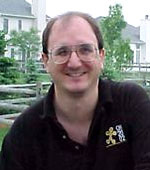 In Toledo, Ohio, we have no local chapters for SIGGRAPH, STC, UPA, HFES, AIGA, or any other core user experience group. Our closest organization is MOCHI
In Toledo, Ohio, we have no local chapters for SIGGRAPH, STC, UPA, HFES, AIGA, or any other core user experience group. Our closest organization is MOCHI , in Ann Arbor, Michigan—1 hour away. The O in MOCHI is for Ohio, so at least we are in their locale. There are only three SIGCHI members that I know of here in Toledo, and that is not enough to actually do anything. There aren’t enough members of any single organization to warrant establishing a local chapter here. This reality has led me to take a different approach as UXnet local ambassador for Toledo—one with 3 prongs:
, in Ann Arbor, Michigan—1 hour away. The O in MOCHI is for Ohio, so at least we are in their locale. There are only three SIGCHI members that I know of here in Toledo, and that is not enough to actually do anything. There aren’t enough members of any single organization to warrant establishing a local chapter here. This reality has led me to take a different approach as UXnet local ambassador for Toledo—one with 3 prongs:
- Focusing on the topic of UX and getting together informally with anyone who is interested in the topic. We include people who do not consider themselves user experience professionals, but realize its importance such as Webmasters, small business owners, and database programmers. We do not meet often, but we have a mailing list for sharing information. This informal network paid off recently when one member heard about a CD-ROM project that needed a usability evaluation, and we were able to quickly hook them up with the right company.
- Creating broader-based communities and “baking in” user experience as a core topic. Instead of creating a stand-alone UX community, I have helped form a local Macromedia Users Group and re-establish our local ACM professional chapter, after 20 years of dormancy. In both cases, UX is a core part of the community, and we address the topic within the context of other issues the community is addressing. I spoke on UX issues at the first MMUG and since then I can see others thinking from a UX perspective. “Yes, this is a nice new product from Macromedia, but how easy is it to use, and how does it help me enable better experiences for my users?” In the local ACM chapter, about a third of the meeting topics are related to UX, with the other two-thirds on more typical computer science topics. There is also a local Internet Professionals Society in formation. In all of these organizations, in addition to making sure that user experience is a key topic, I have also introduced the networking aspect of UXnet. “Leverage as much existing infrastructure as you can.” With so few local resources, all of these organizations have embraced this idea and are working with other existing local groups.
- Thinking regionally instead of locally. As I mentioned before, MOCHI is one hour away, and BuckCHI, in Columbus, Ohio, is two hours away. There are UPA chapters one hour away in Detroit and two hours away in Cleveland. ASIS&T chapters in Michigan and Dayton are both two hours away. There’s an AIGA chapter in Cleveland. Within a three-hour drive, there is a large and active UX community in which I can participate. So I track all of their events on my Web site. I drive to their meetings when I can. I speak at their events. I help out local ambassadors in those areas—like Peter Jones in Dayton and Dave Mitropoulos-Rundus in Detroit. For example, Dave organized a great full-day event in Ann Arbor where I helped out and encouraged Toledoans to attend.
So what works here is to think of user experience as a broad topic in which all sorts of people are interested, to adopt other people’s communities and carry the UX banner, and to think regionally rather than locally. 
UXnet Leaders and the Authors
 Dirk Knemeyer
Dirk Knemeyer
Thanks to Dirk Knemeyer—who until late in 2005 led the UXnet local ambassadors—for his assistance in preparing this article.
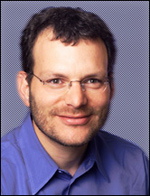 Lou Rosenfeld
Lou Rosenfeld
Our co-author Lou Rosenfeld now leads the local ambassadors.
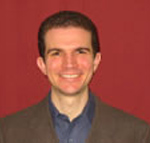 John Ferrara
John Ferrara
John Ferrara is the UXnet local ambassador for Philadelphia, Pennsylvania, in the US.
 Pabini Gabriel-Petit
Pabini Gabriel-Petit
Pabini Gabriel-Petit is a UXnet local ambassador for the San Francisco Bay Area, California, and is a BayDUX co-chair.
 When I first became a UXnet local ambassador, I contacted all the local representatives of the various UX organizations—just to let them know what UXnet is and what we could achieve together. Although we don’t have a lot of organizations here in Italy, those I contacted included the UPA, SIGCHI, International Webmasters Association (IWA), and IAI.
When I first became a UXnet local ambassador, I contacted all the local representatives of the various UX organizations—just to let them know what UXnet is and what we could achieve together. Although we don’t have a lot of organizations here in Italy, those I contacted included the UPA, SIGCHI, International Webmasters Association (IWA), and IAI. During DUX2003, Mike Van Riper—better known as “Van” and then chair of BayCHI, the San Francisco Bay Area chapter of SIGCHI—and Fred Sampson—who at that time was President of the Silicon Valley Chapter of STC—organized a meeting of representatives from all the UX organizations in the San Francisco Bay Area, including local chapters of ACM, AIGA, IDSA, SIGCHI, SIGGRAPH, STC, and the Web3D Consortium. Van dubbed this coalition of local UX organizations BayDUX. Subsequently, they brought together representatives of these organizations for quarterly meetings, in an endeavor to foster collaboration and cooperation among them.
During DUX2003, Mike Van Riper—better known as “Van” and then chair of BayCHI, the San Francisco Bay Area chapter of SIGCHI—and Fred Sampson—who at that time was President of the Silicon Valley Chapter of STC—organized a meeting of representatives from all the UX organizations in the San Francisco Bay Area, including local chapters of ACM, AIGA, IDSA, SIGCHI, SIGGRAPH, STC, and the Web3D Consortium. Van dubbed this coalition of local UX organizations BayDUX. Subsequently, they brought together representatives of these organizations for quarterly meetings, in an endeavor to foster collaboration and cooperation among them. The first big event in which BayDUX participated after joining UXnet was the BayCHI monthly program meeting “
The first big event in which BayDUX participated after joining UXnet was the BayCHI monthly program meeting “ In the spirit of cross-organization collaboration, Van and I facilitated IxDA and BayCHI’s joining forces to sponsor quarterly IxDA / BayCHI Interaction Design Birds of a Feather meetings, which Yahoo! now hosts. Speakers have included Kim Goodwin, who spoke about “
In the spirit of cross-organization collaboration, Van and I facilitated IxDA and BayCHI’s joining forces to sponsor quarterly IxDA / BayCHI Interaction Design Birds of a Feather meetings, which Yahoo! now hosts. Speakers have included Kim Goodwin, who spoke about “ The UXnet initiative has really taken off in the Pacific Northwest over the last year. Originally, I covered both Seattle and Portland. We went from one local ambassador covering the whole region in the Spring of 2005 to having Bill DeRouchey take over the Portland area, Andy Walker in Spokane, and myself remaining the local ambassador in Seattle. We hope to have another local ambassador in the Redmond/Bellevue area soon as well.
The UXnet initiative has really taken off in the Pacific Northwest over the last year. Originally, I covered both Seattle and Portland. We went from one local ambassador covering the whole region in the Spring of 2005 to having Bill DeRouchey take over the Portland area, Andy Walker in Spokane, and myself remaining the local ambassador in Seattle. We hope to have another local ambassador in the Redmond/Bellevue area soon as well. In Toledo, Ohio, we have no local chapters for SIGGRAPH, STC, UPA, HFES, AIGA, or any other core user experience group. Our closest organization is
In Toledo, Ohio, we have no local chapters for SIGGRAPH, STC, UPA, HFES, AIGA, or any other core user experience group. Our closest organization is  Dirk Knemeyer
Dirk Knemeyer Lou Rosenfeld
Lou Rosenfeld John Ferrara
John Ferrara